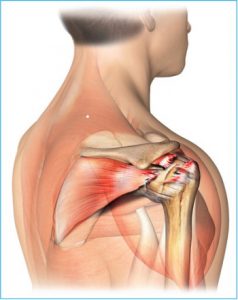What happens in irreparable rotator cuff tears?
A stiff tendon and a muscle that cannot contract forcefully enough to spin the socket’s humeral head (ball) are signs of an irreversible rotator cuff injury. Chronic tendon tears cause the muscle to “involute” and be replaced by fat and scar tissue. Chronically torn tendon damage may result in irreversible damage in several ways spanning many months or years. When a repair is attempted, the tendon tissue becomes brittle, fragile, and prone to tearing. Second, the muscle with which the tendon is linked shrinks (atrophies) and undergoes internal structural change. It appears white on an MRI and is a tight muscle that does not flex. In contrast, healthy muscle is seen as grey.
Why can irreparable rotator cuff tears not be fixed?
Muscle fibres, or little bands, are the basic building blocks of normal muscle. These are the muscular tissue’s contractile components, which give the muscle strength. A bone-attached tendon is pulled when a muscle shortens during contraction. The joint moves because of this. The capacity of the muscle to shorten and contract determines how much power is generated. The muscle ultimately loses this capacity when the tendon is persistently damaged because it develops fibrosis (scar tissue) and gets encrusted with fat. So it can no longer be a strong muscle that can contract and generate joint movement.
How does the recovery take place after the surgery?
- Depending on where the lesion occurred, it may take the repaired tendon up to three months to recover its prior strength.
- Using a hand splint to prevent your tendons from overuse is part of rehabilitation. You’ll often need to wear a hand splint for several weeks following surgery.
- As you heal, you should periodically practise hand exercises to prevent the repaired tendons from adhering to the surrounding tissue and limiting your hand’s range of motion.
- Depending on your career, you can return to work anytime. After 6 to 8 weeks, light activities may often be resumed, and after 10 to 12 weeks, intensive activities and sports.
What is tendon transfer?
A tendon transfer is a relatively uncommon surgery only performed on patients with weak shoulders that are not so weak that they seem nearly paralysed. Patients must meet specific criteria to be considered for this treatment.
When this treatment is carried out for a patient who has lost their supraspinatus and infraspinatus muscles, the latissimus dorsi tendon is moved from the rear of the shoulder to the front of the shoulder so that it may take the place of the rotator cuff in terms of its function. To do this, an incision must be made on the top of the shoulder and in the rear of the shoulder.
What is a reverse prosthesis?
A reverse prosthesis may be implanted in patients who have suffered an irreversible rupture in the rotator cuff tendon and weakness so severe that it is comparable to paralysis of the arm. It will not only help patients increase their range of motion, but it will also alleviate their discomfort. Switching the ball’s positions and the socket creates a fixed fulcrum that allows the arm to rotate in a specific direction. A tendon transfer can sometimes be used with a reverse prosthesis to enhance mobility.

